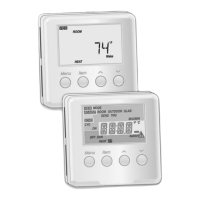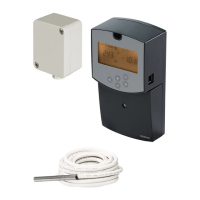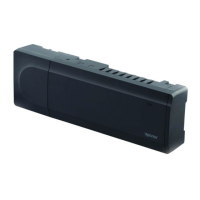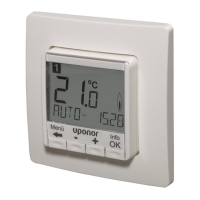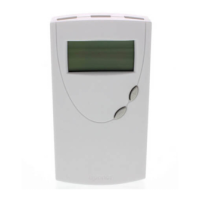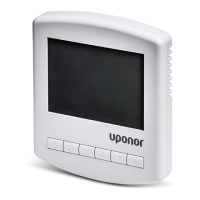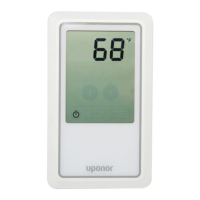VISCOSITY COMPENSATION
(EXCEEDING ∆T MAX)
At low temperatures, glycol solutions used in snow melting
systems become very viscous and difficult to pump. In order
to overcome this condition during a cold start of a snow
melting system, the control is allowed to exceed ∆T MAX
setting for a time to warm the glycol solution.
• Allows control to compensate for the high viscosity of the
glycol solution
• Used when return temperature is below 30°F (-1°C)
NOTE: When control exceeds the ∆T MAX setting,
Maximum pointer flashes when viewing MIX ∆T
item in the View Menu.
RAMPING OF THE ∆T
When control starts applying heat to slab, supply temperature
to snow melting system is ramped up over a period of time
until it reaches maximum allowed ∆T.
OPERATING STATUS (STATUS) (See fig. b)
While in snow melting mode, an additional item is available in
the View Menu called STATUS. It displays current operating
status of snow melting system.
STRT (See fig. c)
Displayed after snow melting system has been enabled and
remains on until slab reaches melting temperature. If the slab
is at melting temperature, STRT is displayed for five seconds
after snow melting system has started operation. This is to
verify that the control has entered into snow melting mode.
STOP (See fig. d)
Displayed after the snow melt system is disabled
IDLE (See fig. e)
Displayed as long as the control is operating slab at idling
temperature
EXT (See fig. f)
Displayed when RUN TIME has reached 0:00 and control still
has an external demand for melting. In this situation, control
continues melting until snow melting demand is removed or
the control is stopped.
73
CONTROL FUNCTION
OVERVIEW
CONTROL FUNCTION OVERVIEW - Section E - Snow Melting
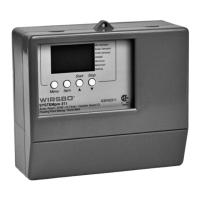
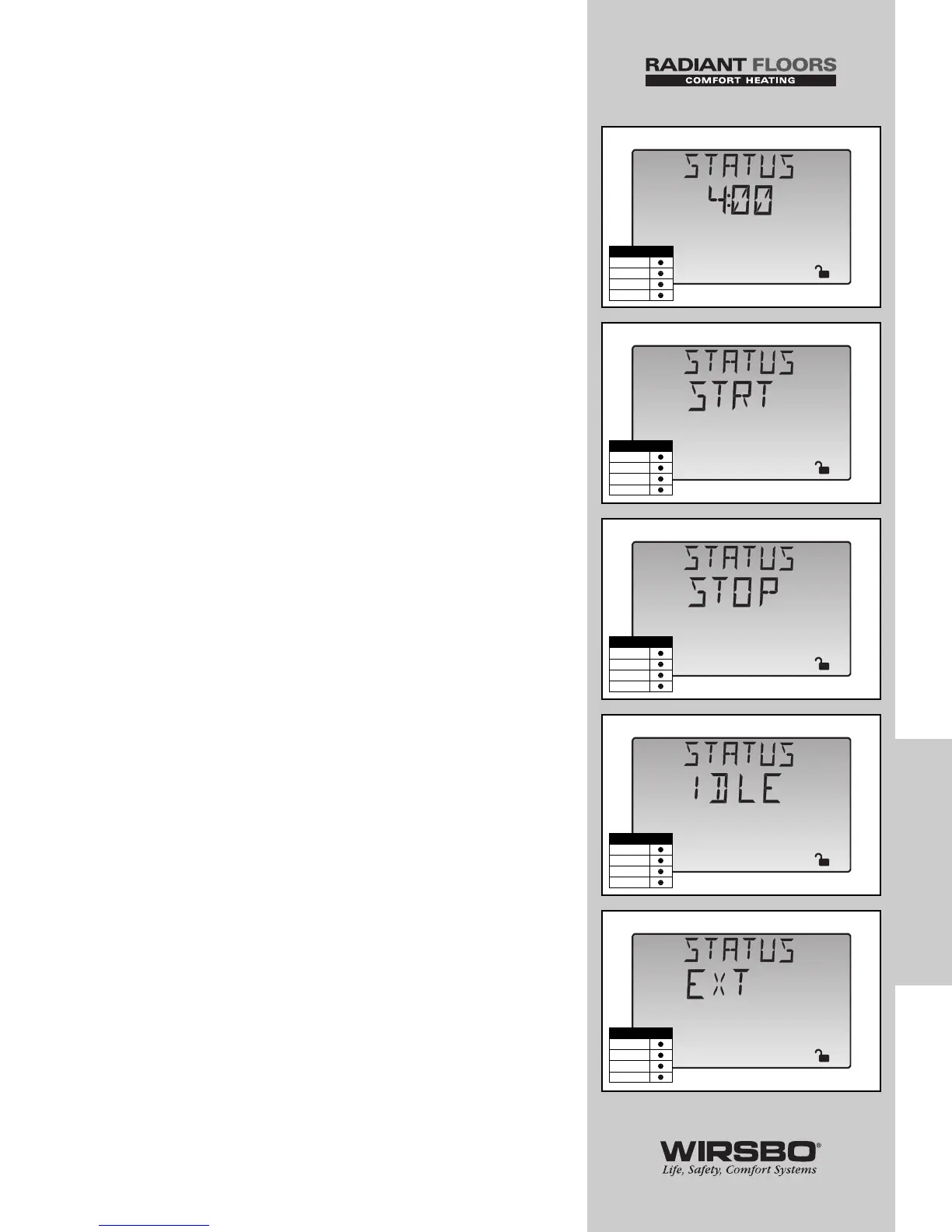